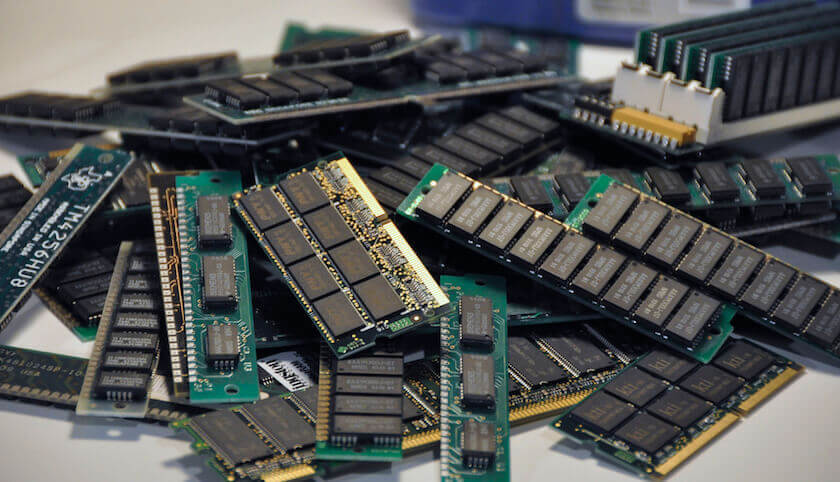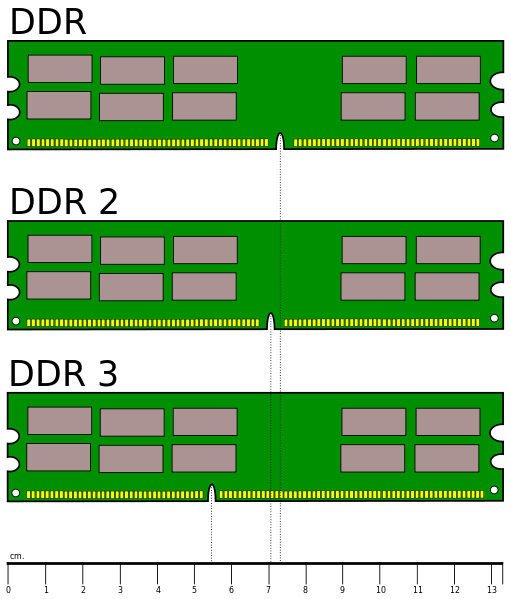DDR RAM stands for Double Data Rate RAM which means it transfers data at twice the rate as SDRAM (synchronous data random access memory). Introduced in the early 21st century, it has the capability to carry out I/O data transfers for both the clock pulses (HIGH edge and LOW edge).
DDR2 and DDR3 were introduced later in 2003 and 2008, and are advancements in the same SDRAM family. But this doesn’t mean they are all alike nor do things the same way. In this article, we address all such differences that have cropped up in the generations of SDRAM.
DDR, DDR2 and DDR3 RAM: The Clock
DDR RAM as already mentioned uses every clock pulse to transfer data and so is theoretically twice as fast as SDRAM (SDRAM uses both the HIGH edge and LOW edge combined to transfer data).
Whereas DDR2 has its data bus running at twice the speeds of the internal clock and thereby was 2 times faster than the DDR. And so follows the DDR3, which is again twice as fast as the DDR2 for the same reason.
Although you don’t get to see such significant speed raises during runtime, at least that’s what is expected from them theoretically while manufacturing.
DDR, DDR2 and DDR3 RAM: Power Usage
The other notable feature that differed through the generations of the SDRAM is the level of power these RAM sticks consume.
All the integrated memory chips on the DDR RAM standard works fine at 2.5volts (2.6V for few models) and could achieve transfer rates of 200-400 MT/sec.
This voltage levels lowered with advancements and the DDR2 required 1.8 volts and the DDR3 a mere 1.5 volts but the transfer rates always got better.
This only improves efficiency and helps develop low power consuming computers for the future. There is also news about the release of DDR4 this year and you can surely expect it to be a much lesser power consuming memory stick (1.2V).
DDR, DDR2 and DDR3 RAM: Clock Speed
The other important specification that has been varying across these generations is the maximum clock speed.
You must have heard this term while dealing with processors; just like clock speed determines how fast your processor is, so does the clock speed of any RAM stick. The more the clock speed the better.
But arguably, you wouldn’t find much difference either between a 1066 MHz DDR2 RAM and a 1066 MHz DDR3 or a 1066 MHz DDR2 and 1600 MHz DDR3 RAM.
This is mainly because most of the applications we run don’t test their benchmark performance except in servers. But again, the more the clock speed the better even though the power consumption goes up with higher clocks.
DDR, DDR2 and DDR3 RAM: The Cost and Compatibility
Probably this is the negative side of the discussion because the cost just kept on growing from model to model. The more the clock speed the better the performance and so is the economical expense.
Also the fact that none of the DDR, DDR2, and DDR3 is backward or forward compatible only adds to ones. As far as we know, the DDR, DDR2 are long obsolete and with the release of the DDR4, It could be time up for DDR3 as well.

